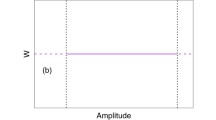Abstract
We studied the chemotaxis of a eukaryotic cell by constructing a mathematical model that takes into account chemical kinetics as well as the cellular shape. A cell is defined as a single domain on discrete two-dimensional grids. In the cellular domain each grid contains three kinds of molecule, an activator and inhibitor of the actin polymerization, and polymerized actins. The external signal promotes production of both activator and inhibitor and thus changes the amount of polymerized actins. If the amount of polymerized actins in a grid of the cell border (i.e., the cellular membrane) is larger than a certain threshold, then a new grid adjacent to the border is assigned to the cellular grid. Upon this change of the cellular shape, constraints are imposed to preserve the cellular volume and to make the length of the cellular border as small as possible. The cell moves in the grid space driven by this change of the cellular shape. We succeeded in reproducing chemotaxis in a linear gradient. For two more complex gradients, the behavior of our cell is consistent with experimental results.
Similar content being viewed by others
References
Roitt I, Brostoff J, Male D (1998) Immunology. Mosby International
PA Spiro JS Parkinson HG Othmer (1997) ArticleTitleA model of excitation and adaptation in bacterial chemotaxis Proc Natl Acad Sci USA 94 7263–7268 Occurrence Handle10.1073/pnas.94.14.7263 Occurrence Handle9207079
TD Pollard (2003) ArticleTitleThe cytoskeletion, cellular motility and the reductionist agenda Nature 422 741–745 Occurrence Handle10.1038/nature01598 Occurrence Handle12700767
TD Pollard GG Borisy (2003) ArticleTitleCellular motility driven by assembly and disassembly of actin filaments Cell 112 453–465 Occurrence Handle10.1016/S0092-8674(03)00120-X Occurrence Handle12600310
TD Pollard L Blanchoin RD Mullins (2000) ArticleTitleMolecular mechanisms controlling actin filament dynamics in nonmuscle cells Annu Rev Biophys Biomol Struct 29 545–576 Occurrence Handle10.1146/annurev.biophys.29.1.545 Occurrence Handle10940259
M Iijima YE Huang P Devreotes (2002) ArticleTitleTemporal and spatial regulation of chemotaxis Developmental Cell 3 469–478 Occurrence Handle10.1016/S1534-5807(02)00292-7 Occurrence Handle12408799
A Levchenko PA Iglesias (2002) ArticleTitleModels of eukaryotic gradient sensing: application to chemotaxis of ameobae and neutrophils Biophys J 82 50–63 Occurrence Handle11751295
NL Jeon H Baskaran SKW Dertinger et al. (2002) ArticleTitleNeutrohil chemotaxis in linear and complex gradients of interleukin-8 formed in a microfabricated device Nature Biotechnol 20 826–830
Author information
Authors and Affiliations
Corresponding author
Additional information
This work was presented, in part, at the 9th International Symposium on Artificial Life and Robotics, Oita, Japan, January 28–30, 2004
About this article
Cite this article
Nishimura, S., Sasai, M. Chemotaxis of a eukaryotic cell in complex gradients of chemoattractants. Artif Life Robotics 9, 123–127 (2005). https://doi.org/10.1007/s10015-004-0323-7
Received:
Accepted:
Issue Date:
DOI: https://doi.org/10.1007/s10015-004-0323-7




